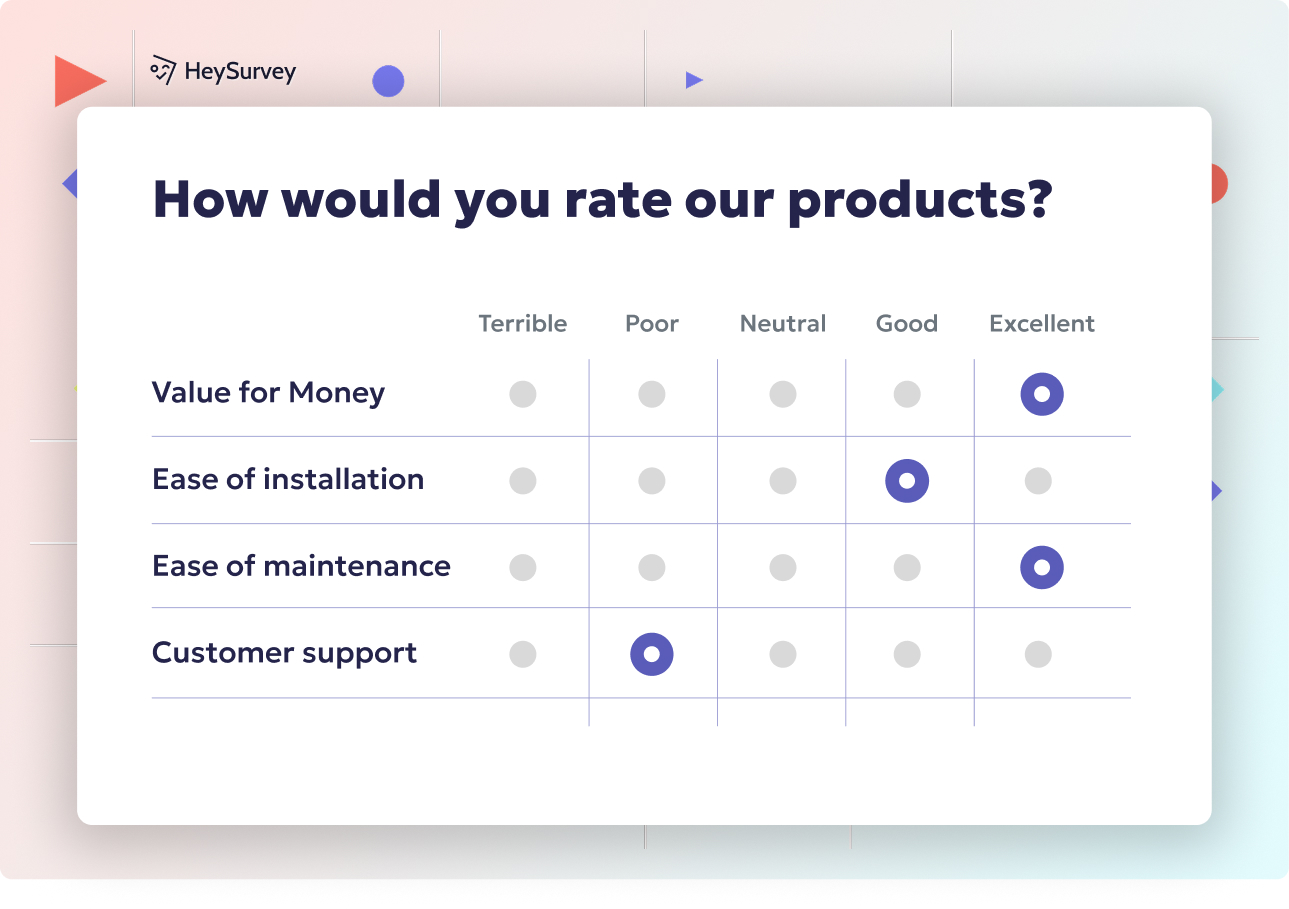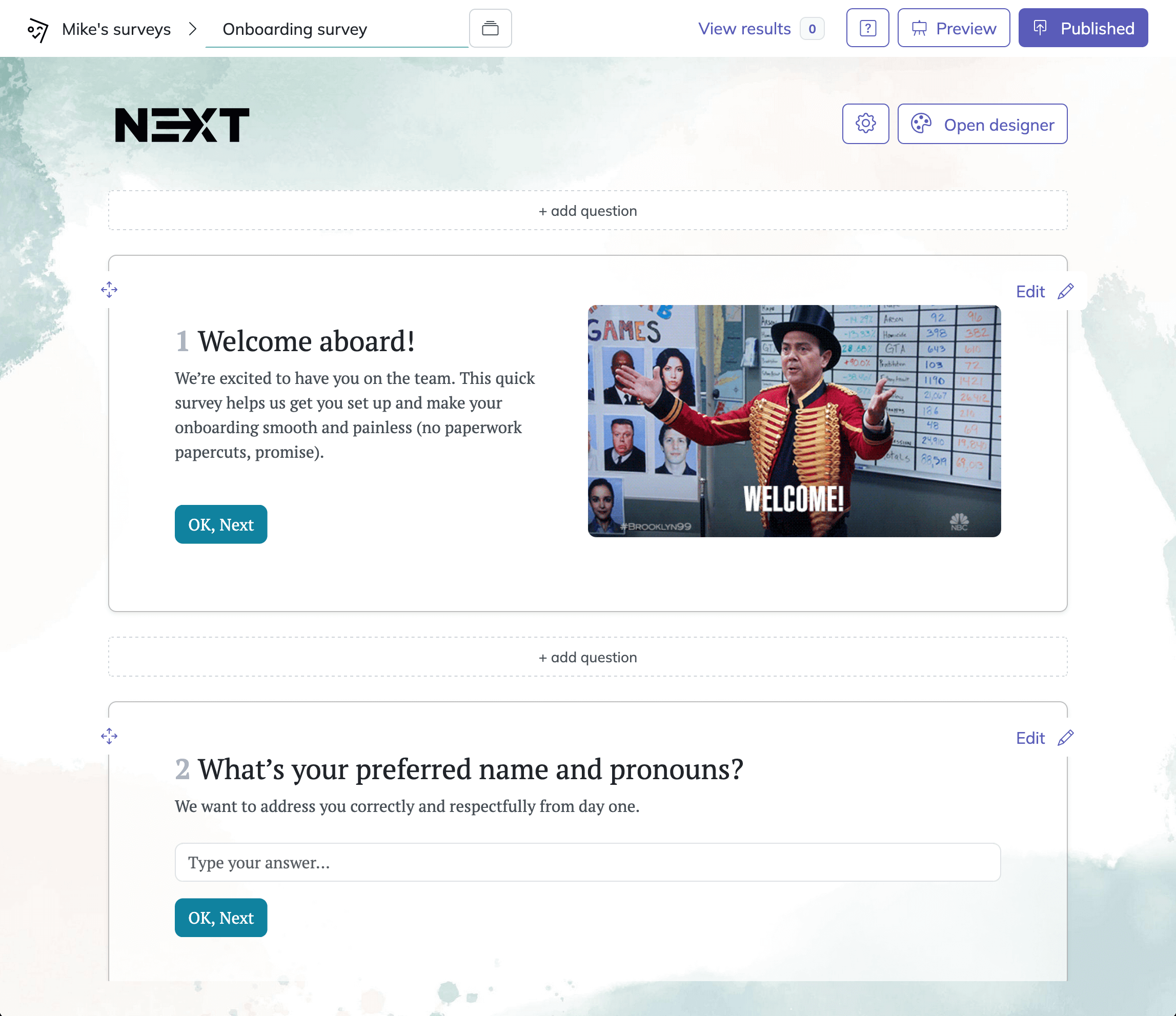30 Essential Program Evaluation Survey Questions for Success
Discover 40 expert program evaluation survey questions with samples across 8 survey types to boost improvement, impact, and feedback.
Program evaluation surveys aren’t just about ticking boxes or making funders happy—they’re powerful tools to supercharge improvement, prove your impact, and keep everyone in the loop. By asking the right questions, you can collect a goldmine of data, from hard stats to juicy stories, at every stage of your program. In this article, you’ll discover eight essential types of evaluation surveys, why each one matters, when to roll them out, and—best of all—a stash of copy-paste-ready questions for instant inspiration.
Pre-Program Needs Assessment Surveys
Why & When to Use
Understanding your audience before you launch a program is a game-changer. Pre-program needs assessment surveys help you pinpoint the challenges and desires of your target group, letting you design solutions that actually hit the mark. By gathering this intel early, you don’t waste resources chasing issues nobody cares about.
Deploy these surveys right before your program kicks off. They set the stage for meaningful goals, aligned resources, and realistic expectations, all while revealing what “success” really means for your audience. No more guessing games—just solid baseline data to measure your magic.
When you use a needs assessment, you can:
Set objectives that match your participants’ burning priorities.
Align your team and resources around what matters most.
Establish baseline metrics for comparison later.
Sharpen your messaging so participants feel instantly understood.
5 Sample Questions
Which challenges related to [program topic] do you currently face most often?
How important is solving this challenge to you on a 1-5 scale?
What specific outcomes would make you consider the program a success?
How much time per week are you willing to commit to a solution like this?
Which delivery formats (online, in-person, hybrid) best suit your schedule?
Conducting a needs assessment at the onset of a project ensures programs are appropriately tailored to the individuals and communities served. (nichq.org)

How to Create Your Program Evaluation Survey with HeySurvey in 3 Easy Steps
Ready to build your very own program evaluation survey but new to HeySurvey? No worries! Here’s a super-simple guide to get you from zero to survey hero in minutes.
Step 1: Create a New Survey
- Visit HeySurvey and click “Create New Survey” (or open a pre-built template below this guide to jumpstart your project).
- Choose either an Empty Sheet to start fresh or pick a Pre-built Template that matches your evaluation type.
- Give your survey an internal name—this keeps you organized behind the scenes.
You’re now in the Survey Editor, ready to craft your questions.
Step 2: Add Your Questions
- Click “Add Question” at the top or between existing ones to start adding questions.
- Select the question type that fits each prompt:
- Use Choice for multiple-choice or rating scale answers.
- Use Text for open-ended feedback.
- Use Scale for Likert-type ratings (e.g., 1–5).
- Use Choice for multiple-choice or rating scale answers.
- Enter your question text (feel free to copy-paste from the sample questions in the article!).
- Mark questions as required if they must be answered before moving on.
- Add descriptions or images if it helps clarify the question.
Pro tip: Use branching if you want customized paths based on answers, but don’t worry—it’s optional!
Step 3: Publish Your Survey
- When you’re happy with questions, hit the Preview button to test how it looks and works.
- Adjust design or question order as needed in the Designer Sidebar for colors, fonts, and layouts.
- If everything’s good to go, click Publish. You will need to create a free HeySurvey account at this step if you haven’t yet.
- Copy your survey’s shareable link and send it out to your participants.
🎉 Survey is live and ready to collect responses!
Bonus Steps to Make Your Survey Shine
Apply Branding
- Upload your organization’s logo in the branding panel to give the survey a professional look.
- Customize colors and fonts to match your brand identity via the Designer Sidebar.
Define Settings
- Set start and end dates so your survey opens and closes exactly when you want.
- Limit the number of responses if necessary.
- Add a redirect URL to send respondents somewhere special after completing the survey (a thank-you page or your website).
Skip into Branches
- Use HeySurvey’s branching options to tailor follow-up questions based on answers.
- This helps keep your survey relevant, short, and engaging for each respondent.
Ready to start? Just click the button below to launch a perfectly pre-formatted template tailored for your program evaluation survey needs!
Process / Implementation Evaluation Surveys
Why & When to Use
Monitoring your program as it’s rolling along is like checking your GPS mid-road trip—you want to be sure you’re not about to steer off a cliff. Process and implementation surveys let you catch glitches, bottlenecks, or gaps while there’s still time to fix them.
Use these surveys in the middle of your program—after a few sessions or modules, but before you hit the finish line. This real-time feedback makes those “uh-oh” moments totally manageable, instead of catastrophic.
These surveys help you:
Identify snags in the delivery process—poor instructions, late resources, or unclear steps.
Monitor if the program is being delivered as planned (otherwise known as fidelity).
Get a sense of whether your staffing and resources are hitting the sweet spot.
Make tiny tweaks or major pivots on the fly, saving the day (and your outcomes).
5 Sample Questions
How clear were the program instructions provided to you?
Rate the timeliness of resource delivery from 1 (very late) to 5 (very prompt).
Which implementation step, if any, caused confusion?
How adequately staffed did today’s session feel?
What immediate change would improve the implementation process?
Effective process evaluation surveys should include questions that assess program fidelity, participant engagement, and staff performance to identify implementation challenges and inform improvements. (aifs.gov.au)
Participant Satisfaction Surveys
Why & When to Use
Getting honest feedback right after your session ends is the secret sauce for lasting engagement and program loyalty. Participant satisfaction surveys deliver that candid insight—while the experience is still fresh—so you know what’s working (and what’s not) before people forget.
Deploy these neat little surveys at the end of every session or module. That way, you capture hot takes on everything from facilitation to room temperature (the literal and figurative kind). It’s your chance to win hearts, tweak content, or fix logistics before participants unplug.
Why these surveys matter:
Identify crowd-pleasing moments and areas that need a boost.
Understand the role of the facilitator’s charisma (or sometimes… lack thereof).
Spot trends that drive referrals, dropouts, or happy clapping.
Shape your next sessions for max satisfaction and glowing testimonials.
5 Sample Questions
Overall, how satisfied are you with today’s session?
How engaging was the facilitator?
Was the pace too slow, just right, or too fast?
Which element of the session was most valuable to you?
Would you recommend this program to a peer? Why or why not?
Learning Outcome (Knowledge Gain) Surveys
Why & When to Use
Measuring what people learn is a true mark of any educational program. Learning outcome surveys let you see if your participants are leveling up, showing off new knowledge, or just collecting attendance prizes. They’re a reality check on curriculum effectiveness and a confidence boost for future program pitches.
Roll out these surveys as pre- and post-tests (or as pop quizzes!) bookending your modules. You can also use them as retrospectives at the end to capture perceived gains. Either way, they give you proof that your brain-boosting magic actually works.
The benefits:
Track progress from hazy beginnings to knowledge mastery.
Reveal which concepts “stuck” and which need a revisit.
Fuel stories for your next grant application or marketing blitz.
Back up your claim as a learning wizard (with receipts).
5 Sample Questions
Before the program, how confident were you in explaining [core concept]?
After completing the module, how confident are you now?
List three new strategies you learned for [task].
Rate your understanding of [specific topic] on a 1-5 scale.
Which content area still feels unclear?
Research indicates that self-reported satisfaction surveys, commonly used in program evaluations, often fail to correlate with actual learning outcomes, highlighting the need for more robust assessment methods. (ncbi.nlm.nih.gov)
Behavior Change / Application Surveys
Why & When to Use
Seeing participants actually use new skills is the dream, right? Behavior change or application surveys are your key to finding out who took action once the applause faded—and who got stuck in the “good intentions” stage. This level of insight makes ROI storytelling way more convincing.
You’ll want to launch these surveys weeks or months after the main event. People need a chance to try, tweak, and live with what they’ve learned, so you can see what sticks and what fizzles out.
Expect to:
Pinpoint which habits or skills participants are really using, and how often.
Discover the barriers that trip people up (and brainstorm fixes).
Gather lived experiences and examples for your next pitch.
Fine-tune your follow-up or booster sessions for real-world, lasting change.
5 Sample Questions
Since finishing the program, how frequently have you applied [skill]?
What obstacles, if any, prevented you from using what you learned?
Describe one situation where the program directly influenced your actions.
Rate the ease of integrating new practices into your routine.
What additional support would help sustain behavior change?
Impact / Outcome Surveys (Long-Term Results)
Why & When to Use
Going for the long game means tracking effects after the confetti settles. Impact and outcome surveys are all about those lasting results—like performance boosts, economic gains, or community improvements—sometimes months or years down the road. Funders love this stuff, and so should you.
Deploy these surveys six to twelve months post-program (or even longer if you’re feeling patient). They zero in on what has truly changed, what’s stuck, and where you still need to lend a hand.
This approach lets you:
Show off your program’s staying power by measuring big-picture outcomes.
Compare where people or communities started versus where they’ve landed.
Uncover sustainable change and ripple effects.
Give your funders all the warm fuzzies (and hard data).
5 Sample Questions
To what extent has the program improved your [measurable outcome] over the past year?
Have you observed measurable benefits for your organization/team/community? Please specify.
How sustainable do you feel the program’s benefits are?
Compare your current results with your baseline prior to the program.
What additional long-term impacts do you anticipate?
Stakeholder / Partner Feedback Surveys
Why & When to Use
You’re not in this alone—programs often run on collaboration, goodwill, and communal effort. Stakeholder and partner feedback surveys keep your alliances strong by letting sponsors, funders, and collaborators tell you what’s working from their view (and where you can improve).
Send these surveys at the wrap-up or after key milestones—especially when funder reporting comes knocking or you’re planning next season’s big campaign. Happy partners are more likely to become future champions.
These surveys help you:
Gauge strategic alignment with partners’ missions and objectives.
Identify where communication shines or sours.
Map the true value partners gain (no more guessing).
Keep doors open for future grants and co-conspirators.
5 Sample Questions
How well did the program align with your organizational goals?
Rate the communication effectiveness between your team and the program staff.
What value did your organization gain from partnering on this program?
Which aspects of collaboration should be improved next cycle?
How likely are you to support or fund similar initiatives in the future?
Cost-Effectiveness / ROI Surveys
Why & When to Use
Get ready to talk money! Cost-effectiveness and ROI surveys let you go beyond feel-good impressions to actual value analysis. Whether it’s for your finance team, your own records, or a potential scale-up, these surveys illuminate how every penny counted.
Run these surveys after program completion, preferably once the dust settles and longer-term benefits are visible. They help you weigh perceived value, identify wasted expenses, and justify your next round of funding.
What you can achieve:
Highlight cost-saving or revenue-driving benefits tied to your program.
Find out where spending made a difference (and where to trim the fat).
Collect powerful data to support funding requests and expansion plans.
Convince stakeholders that scaling is worth every dime.
5 Sample Questions
How would you rate the overall value delivered relative to program cost?
Which outcomes justify the investment most?
What cost areas felt excessive or unnecessary?
Estimate the financial benefits gained since participating (e.g., revenue, savings).
Would you invest in an expanded version of this program? Why or why not?
Best Practices: Dos and Don’ts for Crafting Program Evaluation Survey Questions
When it comes to evaluation surveys, crafting the right questions is half the battle won. Good questions bring clarity, compress time, and unlock rich, actionable data—while poor questions lead to confusion, boredom, or, worst of all, misleading results. Set yourself up for survey superstardom by following a few tried-and-true rules.
Do align each question with a specific evaluation objective or KPI. If a question doesn’t drive evidence for a goal, ditch it.
Do use clear, jargon-free language and balanced Likert scales. Remember: If your survey needs an interpreter, it’s too complicated.
Do pre-test surveys with a small pilot group to catch ambiguities. A single test-run can save your whole project from cringe-worthy results.
Other wise moves include:
Do ensure anonymity/confidentiality to boost honesty.
Do combine closed and open-ended items for depth and ease of analysis.
On the “don’t” side, watch out for these pitfalls:
Don’t double-barrel questions (avoid "and/or" constructs that muddy answers).
Don’t over-survey; schedule touchpoints strategically to minimize fatigue.
Don’t forget to share findings and action plans with respondents to close the feedback loop.
Following these best practices will ensure your surveys not only gather robust data but also build lasting trust and engagement.
Conclusion
Great program evaluation starts with great questions. Each survey—from pre-program checks to long-term ROI calculations—serves its own special purpose. By choosing the right approach and using tailored questions, you can boost outcomes, inspire your team, and keep stakeholders cheering. Most importantly, these surveys keep your programs learning, evolving, and always heading toward bigger wins. Now, go forth and ask brilliantly!
Related Program Evaluation Surveys

30+ Recycling Survey Questions: Templates, Uses & Best Practices
Explore 30+ recycling survey questions with templates, use-cases, and best practices to boost rec...

25 Non Profit Surveys Questions: Ultimate Guide for Insights
Discover a complete guide to non profit surveys questions with 40 sample questions to boost donor...

25 Activity Survey Questions for Seniors to Boost Engagement
Discover 28 essential activity survey questions for seniors to uncover preferences across fitness...


